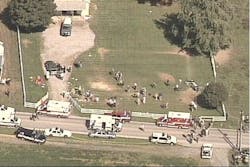Early in the development of active shooter response protocols there was the recognized possibility that an active shooter event could transition to a hostage barricade situation and officers were trained to change tactics accordingly. “Active shooter” was defined as a person or persons actively killing with no apparent intent to cease. A “hostage barricade” situation involves a person or persons who have taken others hostage and are holding them in an area not easily breached without creating risk to the hostages. The key factor for hostage barricade is that the hostages aren’t being killed as fast as the criminal can do so. They are alive and in less immediate danger than those potential victims of an active shooter. What no one ever really planned for (in the active shooter response protocol trainings I’m aware of), is for a hostage barricade situation to become an active shooter situation… very quickly and with tragic results.
On October 2, 2006, Charles Carl Roberts seized the West Nickel Mines School, an Amish one-room schoolhouse where he eventually shot eight of the students (all female), killing five of them. What made the incident radically different from other active shooter events was that he held them hostage first and law enforcement responded accordingly. Then, while law enforcement were on the scene, he began killing them before committing suicide.
- - - - - - - - - -
The remainder of this article is part of the book "Active Killers and the Crimes They Perpetrated," available in print or ebook via Amazon.

Joshua Borelli
Joshua Borelli has been studying active shooter and mass attack events over the course of the past several years, commensurate with receiving training on response and recovery to natural disasters and civil disturbances. Joshua started to outline this series of articles in an attempt to identify commonalities and logistical needs patterns for response.



